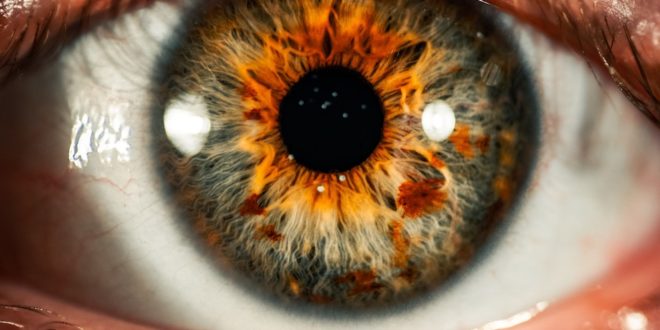Dry eye is a common eye condition that affects thousands of New Zealanders every day. Like open-angle glaucoma, dry eye syndrome increases with ageing. Studies suggest that 40-50% of glaucoma patients have dry eye syndrome, with women more likely to have it. People with glaucoma are at higher risk of dry eye because some glaucoma treatments can worsen the ocular surface and increase the tendency to dry the eye.
How to recognise dry eye?
In some cases, dry eye can affect your quality of vision and sensitivity to light. The most frequently reported symptom of dry eye is grittiness and burning, or a sensation of sand or grit in the eyes. However, you might be surprised to learn that dry eyes can also cause excessive watering of the eyes (epiphora).
Why does this happen?
The thin layer of tears covering your eye keep it lubricated, nourished and protected, and has three main components. Mucins are at the base to help anchor the tear film in place, a watery layer with nutrients is in the middle, and oil is on the surface to reduce evaporation. The various glands that produce these components must all be functioning to create a healthy tear film of adequate quantity and quality. Unfortunately, when this tear film becomes dysfunctional in dry eye, it causes the eye’s surface to become inflamed and result in chronically red, irritated eyes.
This is either because of a lack of tear quantity (volume) or quality. A tear film lacking in quantity is described as ‘aqueous deficient’; a truly ‘dry’ dry eye. One lacking in quality is described as ‘evaporative’ since it evaporates too rapidly, causing irritation and consequent eye-watering. Evaporative dry eye is approximately 9 times more common than aqueous deficiency.
Why has my tear film become dysfunctional?
Usually, a combination of factors is responsible for the development of a dry eye.
Age and Gender: Dry eye becomes more common with increasing age and is particularly prevalent in post-menopausal women.
Environment: Air-conditioned, centrally heated, smoky, polluted, or windy settings, as well as computer use, can aggravate dry eye.
Contact lenses: Contact lenses disrupt the natural tear film, causing excessive tear film evaporation.
General health: Rheumatoid arthritis, diabetes, thyroid disease, and other immune disorders such as Sjögren’s syndrome are more commonly associated with dry eye
Oral medications: Some medications for allergy, depression, or acne, can affect the tear film, as can eye surgery, especially laser surgery (e.g. LASIK).
Eye drops: Glaucoma is associated with a higher incidence of dry eye because of the medications used to treat the condition. Many eye drops for glaucoma contain preservatives, which after repeated application over a long period, can damage the superficial cells of the ocular surface, making the eye’s surface less wettable and resulting in the development of dry eye signs and symptoms.
What can you do about it?
Improve the environmental conditions: Minimise exposure to air-conditioning and central heating. Enhance the moisture level around the eyes by using humidifiers and/or by wearing wrap-around style spectacles to create a humidified local environment protecting the eyes from airflow.
Minimise use of cosmetics: Cosmetics and face creams worn on the face and around the eyes will migrate over the eyelid margins. This can disrupt the tear film, exacerbating dry eye.
Optimise your workspace: Adopt a slight downward gaze at the computer screen where possible to minimise the exposed eye area. Lowering your screen prevents excessive drying of the eye surface improve your blinking by practising complete and regular blinking, at least once every 5 or 6 seconds. Blinking exercises can be done anywhere at any time, and there are even Phone Apps to help. ‘Blink reminder’ apps are designed for dry eye computer users and are free to download
Adjust your diet: Increasing your dietary intake of essential fatty acids (EFA) to include Omega 3 can help reduce dry eye symptoms. Good natural sources of Omega 3 include oily fish (such as salmon) and linseed (or flaxseed) oil. It is also essential to stay hydrated, so drink plenty of water.
Perform eyelid hygiene: Tear film quality can be adversely affected by a lack of oils due to blocked glands. Thoroughly cleaning your eyelid margins, ideally with commercially prepared lid cleansers from your pharmacy, helps to remove any crusts from around the eyelashes. Warm compresses, using a wheat or flaxseed bag heated in the microwave helps to unblock the glands by melting the oils.
After warming the eyelids for at least 5 minutes, it’s helpful to roll our finger gently over your eyelids, towards the edges (i.e. rolling with a downwards motion for the top lid and upwards for the bottom lid) to help squeeze the oils out of the glands. It should be noted these are chronic eyelid conditions and so need regular and long-term commitment if management is to be successful.
Eyelid position correction: The eye’s surface can also become dry because tears are not evenly distributed across the ocular surface. This can occur because of lumps on the surface of the eye. For tears to be spread evenly over the surface, the eyelids must be in good contact with the eye surface. Eyelids that are floppy, lax or turned out (ectropion) can also worsen the tendency to dry eye. Whilst artificial tear drops can help, sometimes surgical correction of the eyelid position may be required.
Use artificial tears: Dry eye is most commonly managed with artificial tear supplements (drops). Most drops are best suited to aqueous deficient dry eye by boosting tear volume, but some newer products target the tear film oil layer to cater to those with evaporative dry eye. The products range in viscosity (runniness). Most gloopy eye drops provide the most prolonged relief from symptoms but cause transient blurring on application. This is well tolerated by patients with moderate to severe dry eye, but those with milder symptoms might prefer a less viscous eye drop. Whilst generally safe to use, the main precaution is to restrict excessive use of preparations with preservatives as they can cause ocular surface toxicity and worsen dry eye symptoms.
Consider punctal plugs: These are another solution for a dry eye that doesn’t produce enough tears. Tiny silicone plugs are inserted in the drainage channels on the inner corners of your eyelid margins, stopping the tears from draining out, keeping the eye’s surface wetter for longer.
Review medication side effects: If prescribed medications cause significant dry eye, your general practitioner (GP) or specialist might consider alternatives. However, often the benefits of your medication outweigh the side effect of dry eye, and other means of managing the dry eye must be sought.










Join the Discussion
Type out your comment here:
You must be logged in to post a comment.